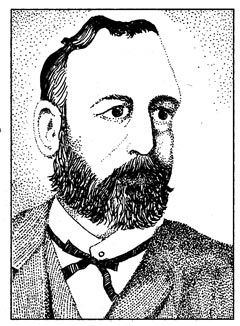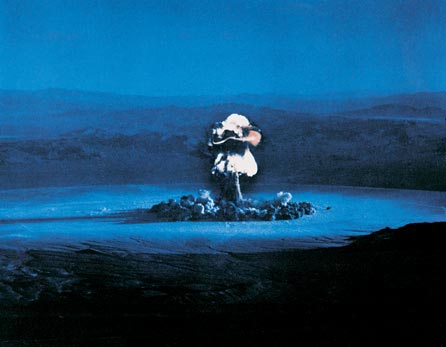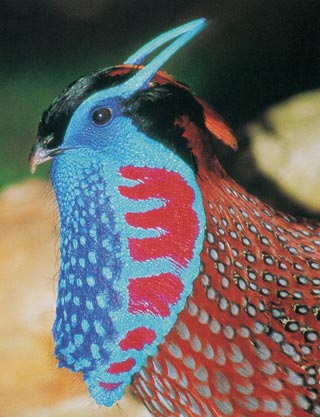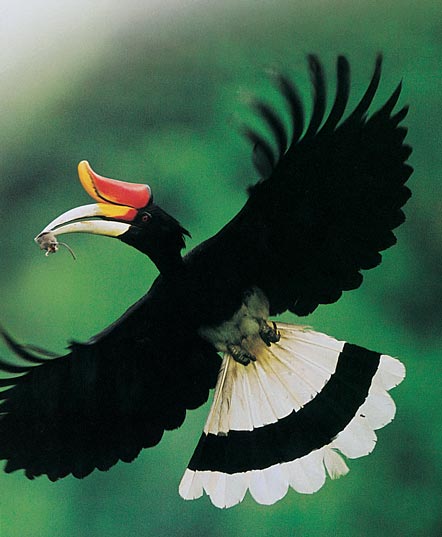The Art of the Infinite, Feynman's Rainbow and more . . .
By Frank Diller, Greg Ross, Linda Schmalbeck, Michael Szpir, Flora Taylor
Short takes on five books
Short takes on five books

DOI: 10.1511/2004.45.0
Bertrand Russell once observed that "Mathematics may be defined as the subject in which we never know what we are talking about." That sense of kaleidoscopic complexity is half the fun of Robert and Ellen Kaplan's The Art of the Infinite: The Pleasures of Mathematics (Oxford University Press, $26), a follow-up to their best-selling history of zero, The Nothing That Is.

From The Art of the Infinite.
The Kaplans begin with the natural numbers and launch a steep climb past algebra and Euclid into field theory and projective geometry. Their aim is not to unravel infinity but to use it as a point of departure, offering playful examples of conjecture and proof to illustrate the serendipity, analogy and enlightened nose-following that mark mathematical exploration. Along the way they invoke Goethe, Baudelaire, dominoes and spaghetti in entertaining prose that is witty and literate, if occasionally purple. And they present brief sketches of math's great personalities, from the immortal Pythagoras to the tormented Georg Cantor (right), whose joustings with the hydra-headed Continuum Hypothesis are the subject of a bravura final chapter.
The result combines stern rationality with a glimpse of the transcendent. Another Russell quote is apposite: "Mathematics, rightly viewed, possesses not only truth but supreme beauty."—G.R.
In Feynman's Rainbow: A Search for Beauty in Physics and in Life (Warner Books, $21), the Star Trek writer Leonard Mlodinow, a former physics wunderkind, looks back on the year he spent as a reluctant prodigy at Caltech in the early 1980s. This is a sweetly entertaining book about the weird, but engaging, world of physics and why he left it. His creative juices were severely inhibited at that venerable institution, where he had an office on the same hall as Richard Feynman and Murray Gell-Mann. Mlodinow wasn't sure he belonged in such august company or that he could replicate the success that had gotten him a Caltech fellowship. But he managed to strike up a relationship with the grumpy, cancer-stricken and yet still-magical Feynman. Mlodinow, groping for direction in his life and work, quizzed Feynman about the process of discovery, taping many of their conversations, and eventually arrived at a new understanding of what’s important in life. Conflicted postdocs and other young scientists will find solace and perhaps inspiration here.—L.S.

From 100 Suns
Between 1945 and 1962, 216 nuclear bomb tests split atoms above the Nevada desert and various isolated islands of the Pacific. Michael Light's chilling 100 Suns (Knopf, $45) uses images from the U.S. National Archives and Los Alamos to capture the sheer power and folly of the nuclear arms race. Notes and captions have been relegated to the back of the book to maximize the impact of the images, which include shots of soldiers standing near blast sites, underscoring the human cost of building a better bomb. Below, 37-kiloton Priscilla becomes queen of the desert on June 24, 1957.—F.D.

From Firefly Encyclopedia of Birds.
No one knows for sure how many species of birds there are, but ornithologist Christopher Perrins includes 9,850 in the hefty Firefly Encyclopedia of Birds (Firefly Books, $59.95). Perrins, with the aid of dozens of other bird experts, has done an excellent job of organizing the book by bird families, providing brief essays on each, along with a "fact file," which maps the family’s global distribution and provides capsule summaries of such characteristics as habitat, voice, diet and conservation status. The 656-page book is sumptuously illustrated with 2,000 splendid color photographs, paintings and location maps of representative species for each family. It's sad to think that some of these beautiful birds may not be around much longer: Birdlife International identifies 1,186 species (about 12 percent of the total) as threatened and another 727 as near-threatened. For many of us, the only chance we may have to see these birds is in a book such as this one.

From Firefly Encyclopedia of Birds.
Above left, Temminck's tragopan (Tragopan temminckii), a member of the pheasant family, displays a colorful ornamental lappet, and right, a rhinoceros hornbill (Bucorvus rhinoceros) flies off with a captured mouse.—M.S.
Imagine this: You're sick for months, with enlarged lymph nodes. One is removed and biopsied. The news is good: No sign of lymphoma. Months pass. Your spleen quadruples in size, so it's removed and biopsied. The news is bad: You do have lymphoma. "Fortunately," you're told, "it's only a low-grade small B-cell lymphoma, not aggressive." Chemotherapy is recommended.
You're loath to be treated with poisons, however, so you seek out second opinions, including a second opinion on the biopsy. The news is terrible: You actually have mantle-cell lymphoma, against which chemotherapy has only about a 5-percent success rate. Without treatment you have a life expectancy of 16 months.
You're a can-do, entrepreneurial sort, a retired publisher of science magazines, so you take action: You start flying around the country in your private plane talking to cancer researchers, educating yourself about experimental biological therapies—vaccines and radiolabeled monoclonal antibodies (Mabs). The news is heartening: There are custom therapies that look very promising and have no known adverse effects. But there’s more bad news, too: Before you can enroll in a clinical trial of an experimental treatment, the FDA requires that you must first have failed chemotherapy—twice!
You persist in exploring the frontiers of research and start to fund some. When your disease, long indolent, flares up, you know what to do: First you curb it with an FDA-approved Mab, and then you fly to Spain to get injections of a vaccine custom-made from your own frozen cancerous white cells, along with a genetically engineered immune stimulator. It works! You’re finally cancer-free.
If you’re Neil Ruzic, you don't have to imagine anything—it all happened to you. And you can write a memoir called Racing to a Cure: A Cancer Victim Refuses Chemotherapy and Finds Tomorrow's Cures in Today's Scientific Laboratories (University of Illinois Press, $24.95).—F.T.
Nanoviewers: Frank Diller, Greg Ross, Linda Schmalbeck, Michael Szpir, Flora Taylor
Click "American Scientist" to access home page
American Scientist Comments and Discussion
To discuss our articles or comment on them, please share them and tag American Scientist on social media platforms. Here are links to our profiles on Twitter, Facebook, and LinkedIn.
If we re-share your post, we will moderate comments/discussion following our comments policy.